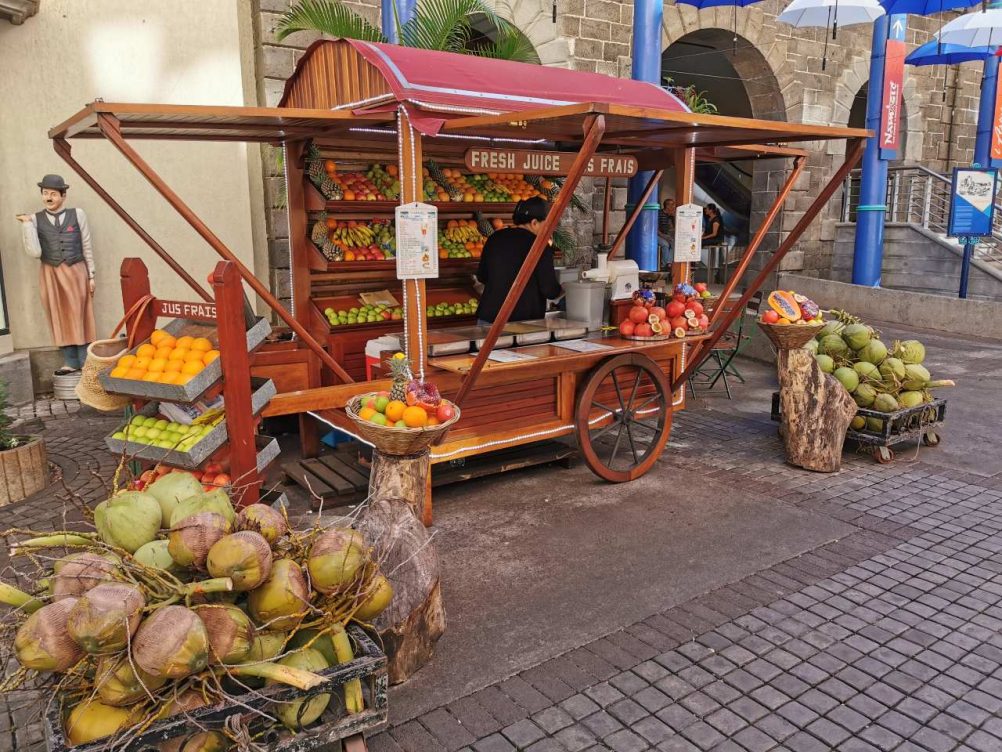The best food in Mauritius? You will find it on the streets
A feast of flavours awaits at this culinary crossroads.
Words by Ute Junker
Photo Ricardo Marques via Unsplash
First published in Traveller
I’m having a “three men walk into a bar” moment right here on the sunny streets of Port-Louis. We have just joined a short queue that contains a cross-section of local society: a well-dressed business woman, a couple of lively school girls, an old man who looks like he’s living on a tight budget. What brings them all together? A craving for gato pima, one of Port-Louis’ most popular street foods.
Served piping hot in brown paper bag, gato pima are falafel-like snacks, made with yellow split peas rather than chickpeas. People eat them on the way to a meeting, on the way home, or when lunch seems just a little too far away. Not only are they incredibly more-ish, they are also dirt cheap: you can pick up three for 10 Mauritian rupees, around 30 Australian cents. This, I decide as I pop another one into my mouth, is one local tradition that I can sink my teeth into.
I have been introduced to gato pima by Shakti Callikan, who is leading me on a street food tour of Mauritius’ capital. Callikan says that apart from exploring Port-Louis’ tastiest bites, the tour also offers an insight into the island country’s melting-pot culture.
“My business partner, Maya, and I wanted to bring some cultural tourism to Mauritius,” Callikan says. “We saw a way to tell a story about Mauritius – about the people who came here, about what it is to be Mauritian – through the food.”
Our explorations start in the Quartier des Epices, or spice district, of Port-Louis. It is packed with narrow houses painted in bright colours, colourful puja stores – specialising in offerings for temples – sitting next to hole-in-the-wall eateries. There are no supermarkets here, only old-school merchants. Callikan introduces us to one of them, Monsieur Ibrahim, whose dimly-lit shop is piled high with big burlap bags of flour, rice, sugar and spice. which has been in his family since 1890.
Like many other shops in the area, Monsieur Ibrahim’s business has been handed down generation to generation, since 1890. His family is originally from the west Indian state of Gujarat, part of a wave of indentured workers brought here in the 19th century by the British. “Between 1834 and 1910, almost half a million people were brought to Mauritius, two-thirds of whom stayed,” Callikan explains.
The Gujarati Muslims are just one part of Mauritius’ multicultural mosaic. From the Quartier des Epices, watched over by its tropically-hued mosque, we walk through Chinatown, a neighbourhood currently being livened up by an explosion of colourful street art.
Here we stop at a hole-in-the-wall outlet to try another typical Mauritian snack, boullettes. This turns out to be a Mauritian name for a familiar food: dumplings. Unlike most Chinese dumplings, however, these are made with chicken, not pork. Pork, it turns out, rarely appears on the menu in Mauritius.
“Around 50 per cent of the population is Hindu, another 18 per cent Muslim,” Callikan explains. “Neither of those cultures eats pork, so pork is something Mauritius really doesn’t do.”
Mauritius’ melting-pot cuisine – along with its local language, creole – reflects its colourful history. Originally settled as a stopover for Dutch trading fleets, it later became a French colony with a large population of African slaves.
“By the time of the French Revolution, there were 3000 French colonists, 2000 gens de couleurs – mixed race people – and 30,000 African slaves from different ports of Africa,” Callikan says. “They needed a language that all of them could understand, which is how the creole language was born.”
As we walk through the narrow streets of Port-Louis’ ancient heart, we pass plenty of small vendors offering fresh fruit and vegetables. Callikan stops at one small table where a range of leafy vegetables, including bak choy and spinach, are laid out.
“This is something very Mauritian,” she says. Along with familiar vegetable categories, such as pulses, salads and so on, Mauriitus has a category of vegetables called “bred”, which includes anything leafy; an interesting little quirk.
When I ask Callikan which vegetables are most popular in Mauritius, she reels off a list, one of which is unfamiliar. “What’s a chouchou?” I ask, intrigued.
“I’m not sure what it’s called in English,” Callikan responds, “But we’ll definitely come across it. It’s very popular.”
Excited about discovering a new tropical vegetable, I look over eagerly when, a few blocks later, Callikan says, “There we go – there’s chouchou!” What I see is a basket full of chokos. So much for exotic edibles.



